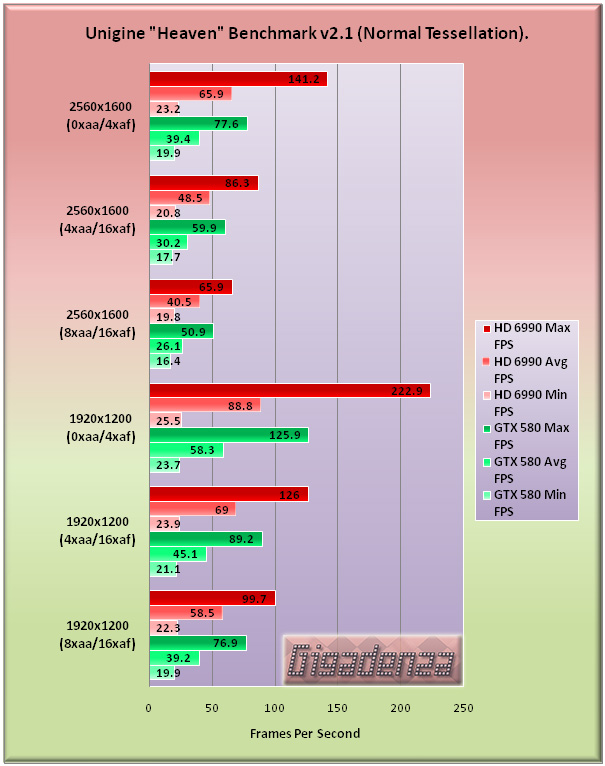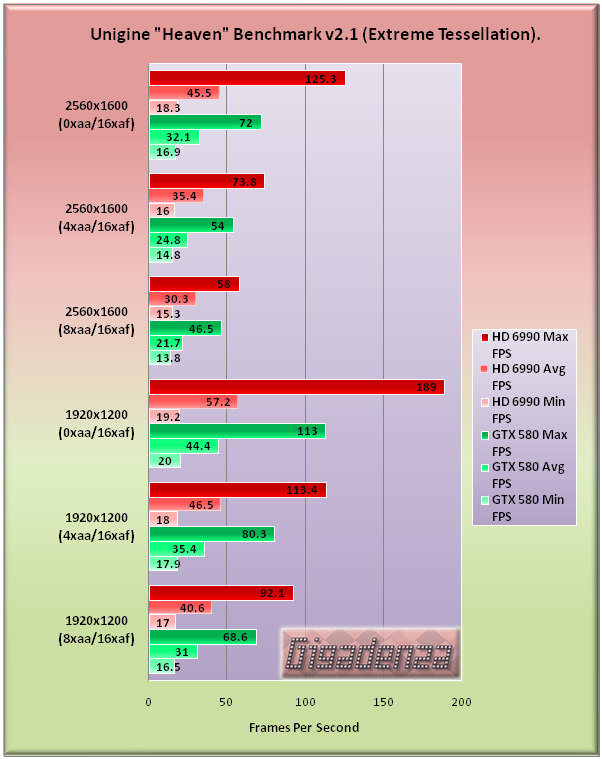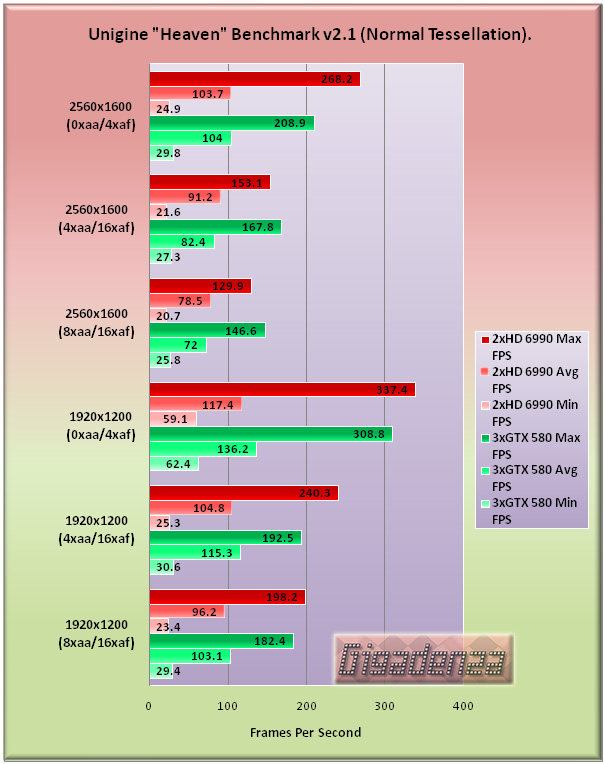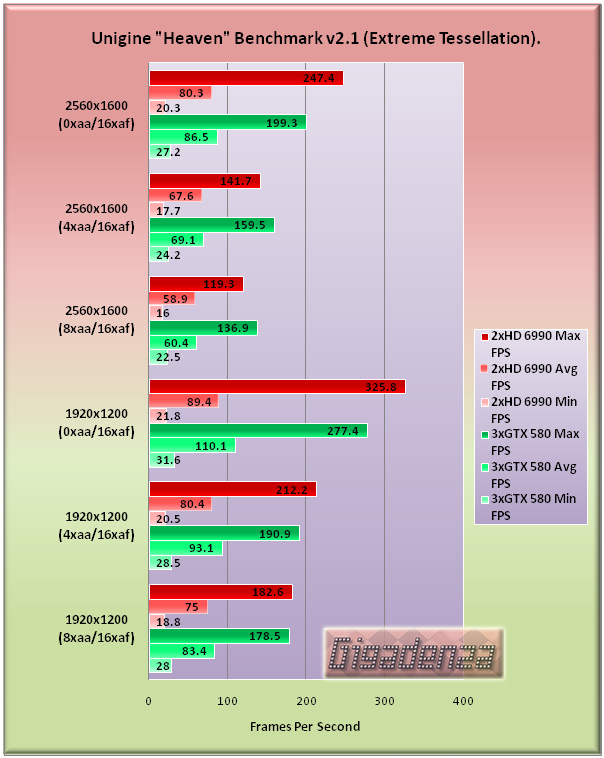HIS ATI Radeon HD 6990 Review. The Benchmarks.
Test 7 – Unigine Heaven.
As many shall no doubt recall, when tessellation became a much vaunted highlight of directX 11, it was comprehensively mastered by Nvidia. Even the GTX 480, despite falling under heavy criticism for lack of power efficiency, excessive heat, and underwhelming performance elsewhere, was able to roundly humble ATI’s 58XX series whenever this particular graphical technique was called upon. Since the Unigine benchmark is widely accepted as the most tessellation-intensive of all, these results will demonstrate whether or not the combination of new hardware and drivers is able to prove ATI’s assertion of a substantial gain in tessellation performance.
Single vs. Single


Looking at the first of the two charts above, with “normal tessellation” engaged, we can see that both cards acquit themselves impressively regardless of resolution and quality. The 580s result of 26.1fps at 2560×1600 with 8xaa and 16xaf is only occasion either dips below an average of 30fps.
Enabling Extreme tessellation takes its toll a little more on the 6990 and serves as strong evidence that Nvidia’s reign as tessellation champ remains intact. Nevertheless, it is ATI’s card that scores another decisive win in singles competition, posting higher, average and maximum frame rates in all twelve runs of the benchmark and a higher minimum frame rate in eleven out of twelve cases.
Crossfire vs. SLI


In the multi card face-off, things get very interesting. Focusing on the average frame rate, with Normal Tessellation active, three 580s out gun two 6990s at 1920×1200 but their lead is reduced as aa and af are applied. The ATi cards achieve a higher maximum frame rate for all three tests at this resolution but Nvidia turns the tables when it comes to minimum frame rates.
At the higher resolution, results for the average frame rates show that the 6990s manage to pull ahead once aa and af are present but the 580s again yield better minimum frame rates in all three runs and somewhat surprisingly, a higher maximum in two out of three.
With “extreme tessellation” active, the pattern is repeated, Nvidia leads but with a steadily decreasing gap as we increase quality and resolution, although this time, the 580s minimum and average frame rates are higher for all six tests.
Poor minimum frame rates have been a major issue for dual GPU cards in the past, especially when in SLI and crossfire, and indeed the 6990s exhibited small amount of micro-stutter at the start of the higher quality runs which was less or not at all manifest with the 580s, though it was still by far the smoothest performance by dual card/4-way GPU setup I have witnessed in this test.
The 6990’s improvement over its predecessor, the 5970, which floundered so badly amidst tessellation, does more than confirm that ATI’s has admirably refined their technology in this regard.
Those wanting first hand evidence are welcome to consult the video below, which shows simultaneous runs of the benchmark from two 5970s and two 6990s in crossfire, at 1920×1200, with extreme tessellation and aa+af applied.




